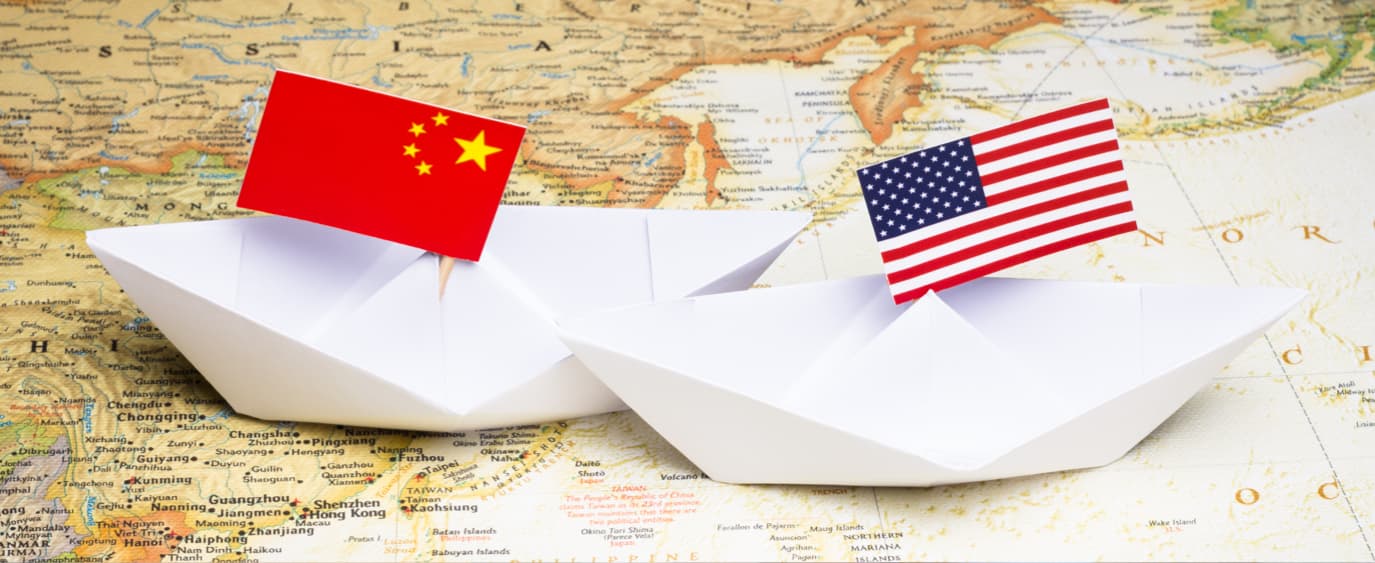Aug 05, 2019
The U.S.-China Trade War Explained
Talks collapse and threats of new tariffs affect markets.

The trade war with China continued to intensify this week, as President Trump said he would hit the world’s second-largest economy with new tariffs.
Stock market indexes around the world dropped on Monday, August 5, 2019 as China retaliated by canceling orders for U.S. products, and by devaluing its currency.
What’s happening with the trade war with China?
Trade talks between China and the U.S. broke down, over an alleged agreement that China would purchase more products from the U.S.
The Trump administration threatened a new round of tariffs, in addition to the $250 billion it has already placed on Chinese imports.
In response, China has called for a halt to purchases of American agricultural products.
China is also allowing the value of its currency, called the yuan, to fall. It’s a little complicated, we know, but bear with us. China pegs its currency to the dollar. Very generally, that means every yuan exchanged equals a fixed amount of dollars that fluctuates with the value of the dollar. By letting its currency devalue, or fall below its current value, China makes its own goods and services cheaper in export markets.
Last week, the Federal Reserve also cut a key interest rate in the U.S., in an attempt to keep the U.S. economy from slowing down.
What’s a trade war again?
A trade war is when countries start waging an economic battle with each other using tariffs. One country will put tariffs on another’s goods, and the other will retaliate in kind.
A tariff, sometimes called a duty, is a tax imposed by one nation on another’s imports. (In some cases, tariffs can be “levied”–or placed–on exports.) The tariff is generally calculated as a percentage of the import’s total value, including freight and insurance charges.
Governments tend to impose tariffs on another’s goods to make their own products more competitive and affordable, and to generate revenues.
Until recently, the U.S. has generally refrained from increasing tariffs and entering into trade wars with other countries.
The trade war with China could decrease global growth by $1.2 trillion, according to recent reports. The U.S. and China are the world’s first and second-largest economies.
Remember the Stash Way
Investing can be scary and confusing, especially when markets are volatile.
That’s why we’ve boiled down our investing philosophy into three basic principles that we hope can guide you as you make your first investing decisions. We call our approach the Stash Way. Here are its three pillars:
Invest for the long-term
Invest regularly
Diversify
You can learn more about the Stash Way here.
Related articles

financial-news
Apr 07, 2025
Investing During Volatile Times

financial-news
Apr 03, 2025
How to Stay the Course Through Tariffs and Turbulence

financial-news
May 15, 2024
Rebirth of the meme stock craze? 5 brutally honest reasons why you shouldn’t be buying, despite the hype

budgeting
Jan 09, 2024
9 ways to celebrate financial wellness month

financial-news
Nov 09, 2023
What is a Recession?

financial-news
May 15, 2023
The Stash Way: Invest Regularly
By using this website you agree to our Terms of Use and Privacy Policy. To begin investing on Stash, you must be approved from an account verification perspective and open a brokerage account.
